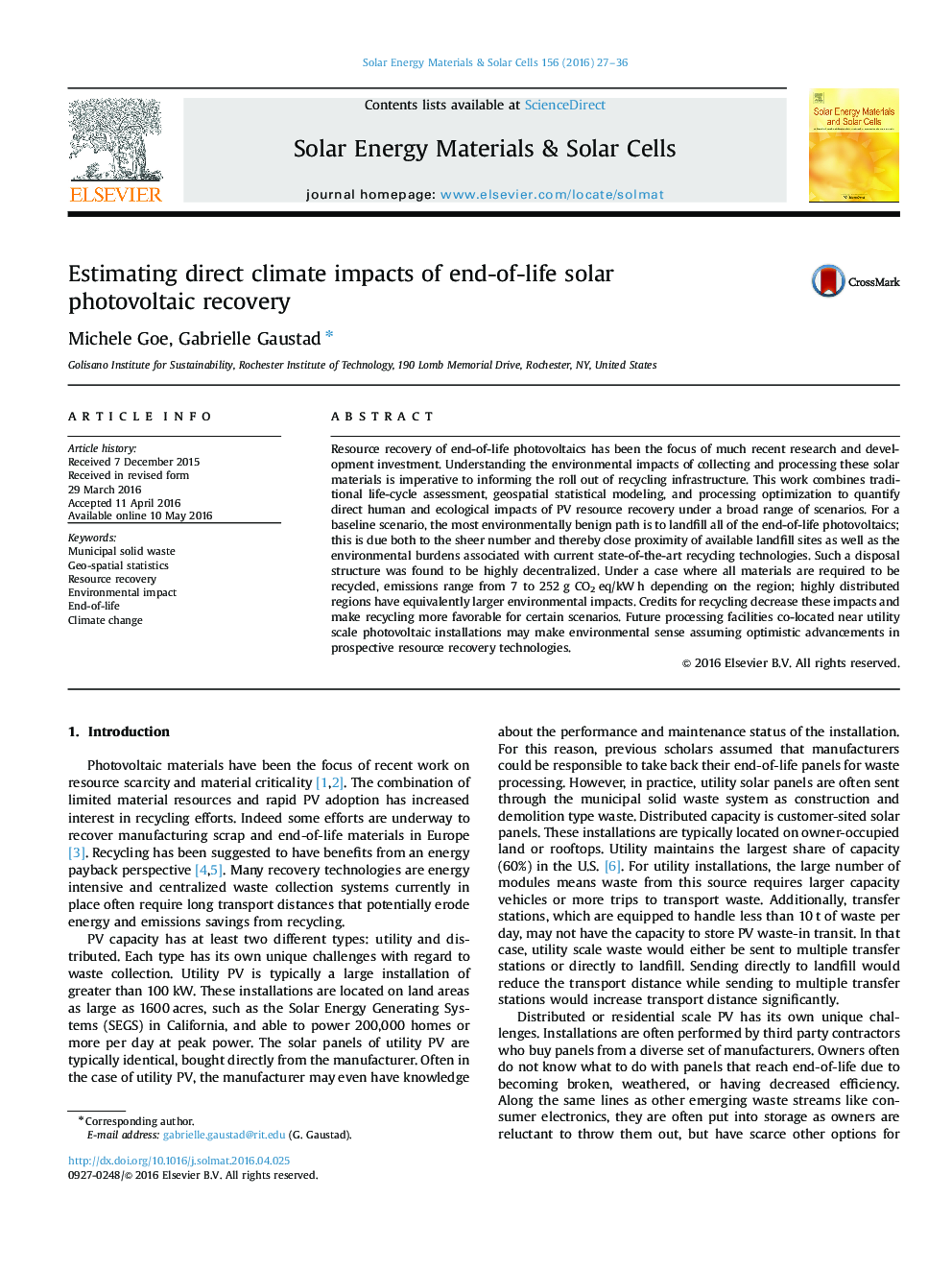| Article ID | Journal | Published Year | Pages | File Type |
|---|---|---|---|---|
| 6457652 | Solar Energy Materials and Solar Cells | 2016 | 10 Pages |
•Work presents combination of geospatial, optimization, and environmental modeling.•Most environmentally benign path is landfill under all scenarios due to proximity.•Under case where recycling is required, emissions range from 7 to 252 g CO2 eq/kW h .•Highly distributed regions have equivalent larger environmental impacts as expected.•Co-location near utility scale PV may make environmental sense in future scenarios.
Resource recovery of end-of-life photovoltaics has been the focus of much recent research and development investment. Understanding the environmental impacts of collecting and processing these solar materials is imperative to informing the roll out of recycling infrastructure. This work combines traditional life-cycle assessment, geospatial statistical modeling, and processing optimization to quantify direct human and ecological impacts of PV resource recovery under a broad range of scenarios. For a baseline scenario, the most environmentally benign path is to landfill all of the end-of-life photovoltaics; this is due both to the sheer number and thereby close proximity of available landfill sites as well as the environmental burdens associated with current state-of-the-art recycling technologies. Such a disposal structure was found to be highly decentralized. Under a case where all materials are required to be recycled, emissions range from 7 to 252 g CO2 eq/kW h depending on the region; highly distributed regions have equivalently larger environmental impacts. Credits for recycling decrease these impacts and make recycling more favorable for certain scenarios. Future processing facilities co-located near utility scale photovoltaic installations may make environmental sense assuming optimistic advancements in prospective resource recovery technologies.
